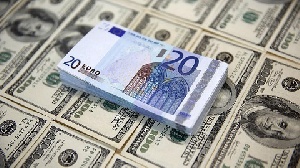 This new feat is as a result of increasing oil exports
This new feat is as a result of increasing oil exports
Ghana's foreign reserves is expected to receive a boost from oil exports and financial inflows, increasing its import cover from an estimated 2.3 months at the end of 2017 to 5.1 in 2018 and further to 6.1 in 2019, BMI, research outfit of Fitch Ratings has indicated.
This will indicate a much improved external position and boost the local currency’s stability further.
Foreign direct investment declined in early 2017 following the completion of work related to the Sankofa gas project and TEN oilfield.
However, BMI said “we see financial inflows picking up over 2018 and 2019 for the further expansion of oil fields, following Ghana winning a prolonged international court case against Côte d'Ivoire over offshore reserves, adding “The combination of rising investment and structurally narrower current account deficits compared to previous years will see Ghana's foreign reserves recover markedly in the short term, with its import cover rising from an estimated 2.3 months at the end of 2017 to 5.1 in 2018 and 6.1 in 2019.”
The Bank of Ghana has said that foreign reserves have declined US$6.9 billion from US$7.8 billion as at end 2017, about 3.8 months of imports which the Bank of Ghana linked to bond coupon payments over the period.
However, Ecobank Research said Ghana’s foreign reserves rebounded in September 2017, increasing by 1.3 percent to US$6.9 billion in October 2017, about 3.9 months of imports cover.
This followed the September signing of a Cocobod loan agreement for US$1.3 billion for the 2017/18 season.
The cedi traded between GHc4.403 and GHc4.408 on the interbank forex market.